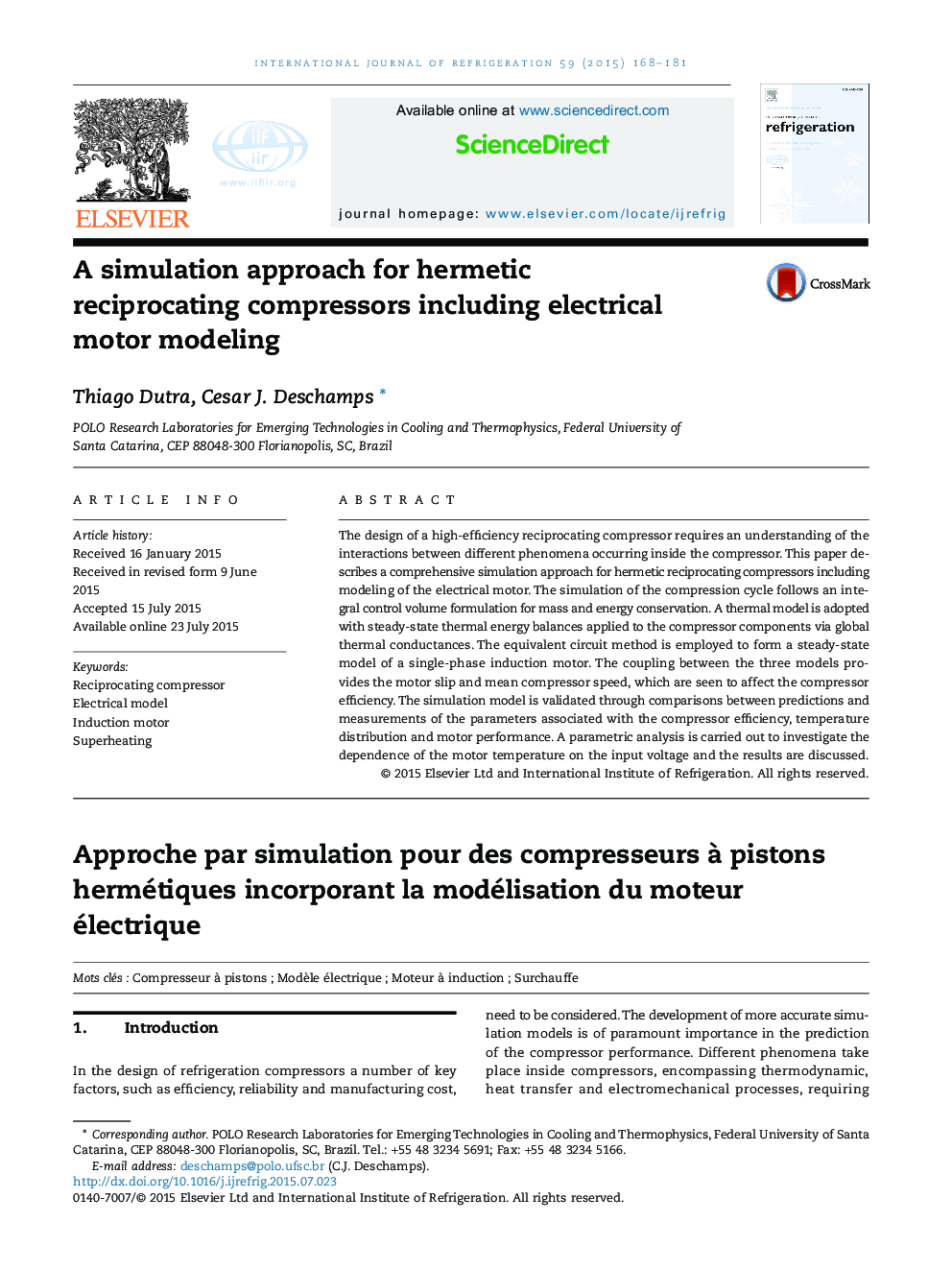| Article ID | Journal | Published Year | Pages | File Type |
|---|---|---|---|---|
| 788617 | International Journal of Refrigeration | 2015 | 14 Pages |
•A new simulation approach for hermetic reciprocating compressors is developed.•The equivalent circuit method is employed to model the electrical motor.•The electrical model allows predictions of the motor slip and compressor speed.•Prediction of the compressor efficiency is improved with the proposed model.•Sensitivity of the motor temperature with respect to input voltage is examined.
The design of a high-efficiency reciprocating compressor requires an understanding of the interactions between different phenomena occurring inside the compressor. This paper describes a comprehensive simulation approach for hermetic reciprocating compressors including modeling of the electrical motor. The simulation of the compression cycle follows an integral control volume formulation for mass and energy conservation. A thermal model is adopted with steady-state thermal energy balances applied to the compressor components via global thermal conductances. The equivalent circuit method is employed to form a steady-state model of a single-phase induction motor. The coupling between the three models provides the motor slip and mean compressor speed, which are seen to affect the compressor efficiency. The simulation model is validated through comparisons between predictions and measurements of the parameters associated with the compressor efficiency, temperature distribution and motor performance. A parametric analysis is carried out to investigate the dependence of the motor temperature on the input voltage and the results are discussed.
